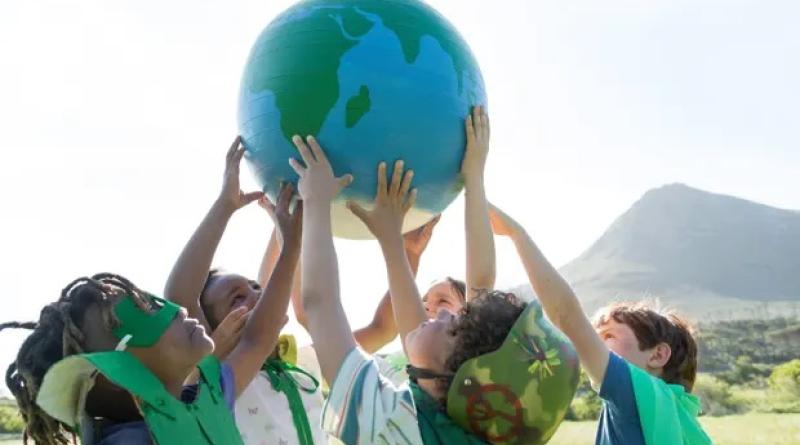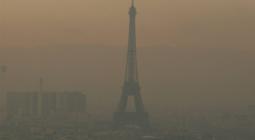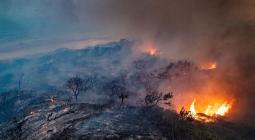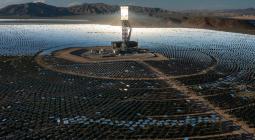It’s not the job of children to fix the climate crisis. We must show them grown-ups are leading the way

When I was in primary school my favourite Baby-Sitters Club member was Dawn Schafer, the environmental crusader. This was the 1990s, when we were all very concerned about CFCs and other greenhouse gases, although not enough to lose sleep over them. I remember carefully spelling out CHLOROFLUOROCARBONS in bubble letters on poster paper for a school project. I had a thing for dolphins and wanted to be a marine biologist. Clean Up Australia Day was still in its infancy.
Our world was smaller then, information thinner on the ground. Dial-up internet was years away from being a fixture in most homes and we collected cardboard circles from chip packets for fun. It’s easy to wearily suggest kids today have it better. But we didn’t feel that we had to carry the weight of the world on our shoulders. We watched Captain Planet, recycled, sometimes picked up extra rubbish if we were being punished or feeling virtuous, but we mostly trusted adults had things in hand. There was never any suggestion it might be too late to turn the ship around.That’s a luxury today’s kids don’t have. They navigate an increasingly complex world, with more awareness than ever before about what is going wrong – and it’s taking a toll. A survey of 10,000 young people in 2021 found 84% were at least moderately worried about climate change, 59% were extremely worried and 45% said it negatively affected their daily life and functioning. The low hum of climate anxiety is building to a roar and it’s having a profound effect on kids’ mental health.
In the summer of 2019-2020, as bushfires raged across Australia, driving species to the brink of extinction and turning air hazardous, it seemed something had finally shifted. This was our wake-up call. The world was taking notice and I was sure things would be different after this. We would recover and mobilise in a unified way. Then came Covid. The air was safe to breathe again, but only if no one else was standing nearby. Disposable masks littered the streets and KeepCups were banned. Along with the rest of the world, I fell into a deep funk. I watched a lot of TV.
One night the screen transported me to a magical place, an icy island halfway between Norway and the north pole, home to reindeer, polar bears and northern lights. On the island was a mountain, its entrance marked by a glittering green art installation. And inside the mountain was a vault filled with millions of seeds. But this wasn’t a fantasy film, it was a real place: the Global Seed Vault in Svalbard – built by the Norwegian government for the good of humanity. More than one million seed samples from almost every country in the world are stored there in case of global disaster, such as war – or climate catastrophe.
This microdose of wonder during a dark time inspired what would become my first picture book. The Garden at the End of the World is about a girl who finds a rare plant near her home and goes on an adventure with her botanist mother to deliver it to the Global Seed Vault for safekeeping. It was the lullaby I needed to get me through lockdown – an ode to nature and wonder and the helpers; the good things already being done. I didn’t realise it would resonate with so many weary kids and parents as well.Ecotherapy focuses on a sense of awe and connection to nature, which some therapists suggest might be more helpful to kids than encouraging them to care for the environment – a responsibility that should belong to us, as adults. Things such as hiking in green spaces, creating art in or with nature, playing with animals, even community gardening, can help kids avoid climate anxiety and burnout. This in turn may ensure they are in a better place to affect change as they grow up.
The main difference between writing for children and writing for adults is that stories for young people must have hope, a glimmer of something on the horizon that says: keep going. The real-life Dawns, Greta Thunberg and her ilk, have proven young people can be powerful agents of change, and the narrative has shifted to accommodate and celebrate their voices – and rightly so. But among defiant stories of empowered kids we need to offer reminders that the responsibility isn’t theirs alone; grown-ups are already helping. Children are the future, but we need to lead the way – at least for now. We owe it to them.
cover photo:The low hum of climate anxiety is building to a roar and it’s having a profound effect on kids’ mental health,’ writes Cassy Polimeni. Photograph: Alistair Berg/Getty Images






